Ijraset Journal For Research in Applied Science and Engineering Technology
- Home / Ijraset
- On This Page
- Abstract
- Introduction
- Conclusion
- References
- Copyright
IOT-Based Monitoring and Controlling of Automatic Water Dispenser with Face Mask Detection
Authors: Paramesh B L, Dr. C Mallikarjuna, Dr. R Suresh, Vinod Kumar M S
DOI Link: https://doi.org/10.22214/ijraset.2024.66106
Certificate: View Certificate
Abstract
The study aimed to investigate the water quality parameters along with the usage of a face mask detector to prevent contagious diseases. Water dispensers are usually placed at schools, offices, hospitals, bus stations, railway stations, etc., due to inappropriate usage, these water dispensers are becoming the source of contact for diseases spreading through saliva droplets, sneeze, and cough. In the traditional type of water dispensers, a person needs to come in contact with the dispenser to fetch the water and this may lead to the spreading of diseases very rapidly. This paper presents the automatic dispenser without any physical contact and will be operated only using a face mask and bottle detector by this configuration we can also prevent water loss by the predefined quantity, also this helps the admin to monitor the automatic water dispenser by using internet of things (IoT). By adopting this method one can get quality and hygienic water. Also, this creates awareness among society. This system prevents the spreading of contagious diseases like severe acute respiratory syndrome corona virus-2 (SARS-CoV-2).
Introduction
I. INTRODUCTION
Water may be a vital resource needed to sustain life. It is one of the important substances on earth that is essential for humans, plants, and animals. Water delivers important nutrients to all our cells, especially muscle cells and brings oxygen to our brain. Water scarcity is the demand for lack of freshwater. This might be due to climate changes, natural calamities, increased human consumption, etc. Two-thirds of the worldwide population live under conditions of severe water scarcity a minimum of one month of the year. The availability of safe drinking water is a global challenge due to two factors, (i) Quality of water and (ii) Quantity of water. The crisis of hygienic water is a challenge that is being faced by mankind. This can be overcome by the usage of water dispensers.
A water dispenser is used as a refrigerating unit that cools or heats the water. Water dispenser plays a vital role in hospitals, restaurants, schools, offices, public places, etc., for storing and using clean water. This equipment supplies quality water for drinking along with an adequate amount of power of hydrogen(pH), turbidity and includes physical and chemical properties of water. The advantages of a water dispenser include, it tastes better than normal water, better for a sugar-free diet, saves money and space, makes it easy to drink more water. The traditional water non automatic water dispenser as shown in below Figure 1.
Water has become a crucial factor that is a route for many contagious diseases that can spread very quickly and be fatal. If the source of contaminations is known, the problem will decrease by spreading awareness among people and by using simple methods which can prevent diseases. One such problem is an ill-health person encountering the water dispenser with a bare hand and without a mask might be problematic.
To reduce such complications, the usage of Automatic water dispensers with face mask detection and IoT-based monitoring and controlling can be implemented. This method not only serves hygienic water to the public but also helps in controlling fatal diseases. Raspberry Pi and Arduino uno are used as a control unit in this system and an open-source computer vision (open-source CV) python library is used to detect the face mask. pH sensor and turbidity sensors are used to monitoring the water quality parameters like pH value and turbidity.
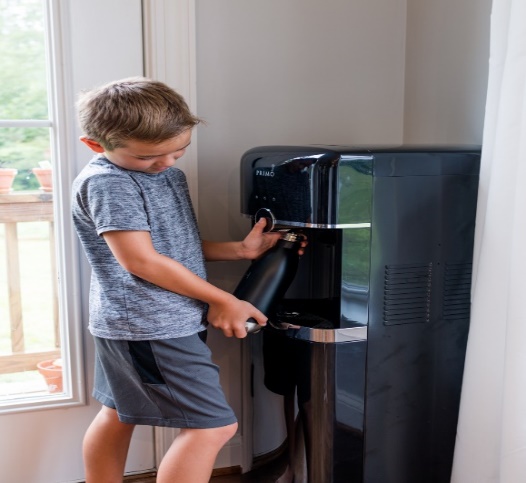
Figure 1: Traditional water non automatic water dispenser.
II. LITERATURE REVIEW
In ref [1], the author demonstrates how the system is designed and implemented using WeMos D1 mini and sensors (pH, turbidity, temperature, and ultrasonic). WeMos D1 mini has built-in Wi-Fi for sending sensor data over the internet. Water quality data gathering, online data transfer, monitoring, recording, and analysis were all created and tested in the overall experimental setting. The ThingSpeak IoT platform is used to monitor sensor data.
In ref [2], the author briefs the real-time water quality inquiry and reduction of wasting of using Internet of Things (IoT). Sensors are used to measure different water properties such as pH, turbidity, and temperature. Blynk App sends measured data to concerned authorities for further action to increase water accuracy and reduce water waste.
In ref [3], the author demonstrates automatic water dispenser and water level monitoring is been proposed using Node MCU and ultrasonic sensor, smart taps in IoT environment. Smart water dispenser sends a notification to authorized persons when the level of water becomes low and smart taps helps to save water. When the authorized person receives the notification of a low water level, the android app will help users to order water cans or tanks.
In ref [4], the author conducted a meta-analysis using a random-effects model with the help of R software (version 4.00) to find the effectiveness of medical and cloth facemask by using PubMed, Google Scholar and the Cochrane Library Database.
In ref [5], the author explains how to recognize face masks using a hybrid model that combines deep and classical machine learning. This face mask detector is built utilizing Python, OpenCV, TensorFlow, and Keras technologies with a dataset. A beep alert will be triggered if somebody is found without a face mask.
III. PROPOSED METHODOLOGY
Our proposed “IoT-based monitoring and controlling of automatic water dispenser with face mask detection” provide the real time status of water dispenser. This system consists of power supply, sensors, Arduino, water pump and pi camera. a brief description about the block diagram is discussed as shown in Figure 2. Firstly, a power supply is connected to raspberry pi and Arduino to power up the system. Water pump is immersed in the water tank and output of the pump is connected to dispenser tap. pH sensor and turbidity sensor are connected to Arduino which measures the quality of water and displays the values using liquid crystal display (LCD) and organic light emitting diode (OLED). Pi camera and Passive infrared (PIR) sensor is connected to the raspberry pi, so when a person comes close to the water dispenser, Pi camera and PIR sensor detects the face mask by using open CV and machine learning programs. Infra-red (IR) sensor is connected to Arduino and used to detect the bottle.
Once both bottle and face mask are detected the water is dispensed with predefined quantity. Additionally, an email alert and the picture of the person will be sent to administrator and gets stored in the database. demonstrated model as shown in Figure 3.
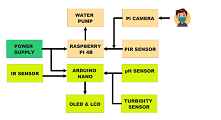
Figure 2: Block diagram of proposed system.
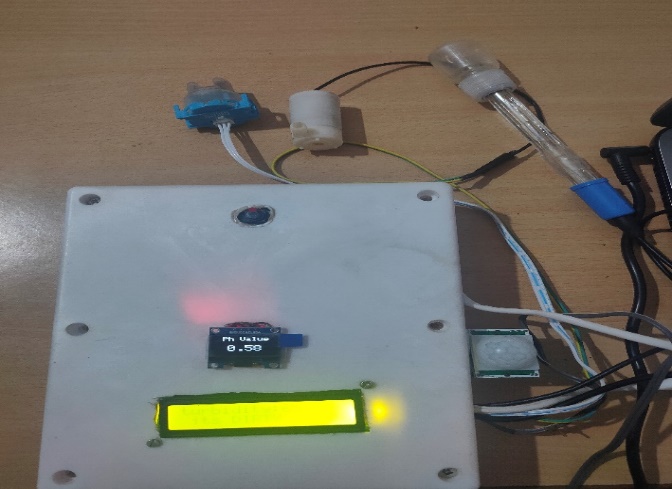
Figure 3: Demonstrated model.
The proposed system can also be understood using flow chart in Figure 4.
- Ph sensor and turbidity sensors senses water quality.
- IR sensor detects the water bottle.
- Pi camera detects the face mask with the help of OpenCV and machine learning programs.
- PIR sensor senses the distance of the person from dispenser, when a person within the range it helps to capture the photo using Pi camera.
- When both bottle and facemask is detected water, pump is turned on and dispenses the water.
- Once water is dispensed email alert sends admin and captures the photos of person and stores in admin database.
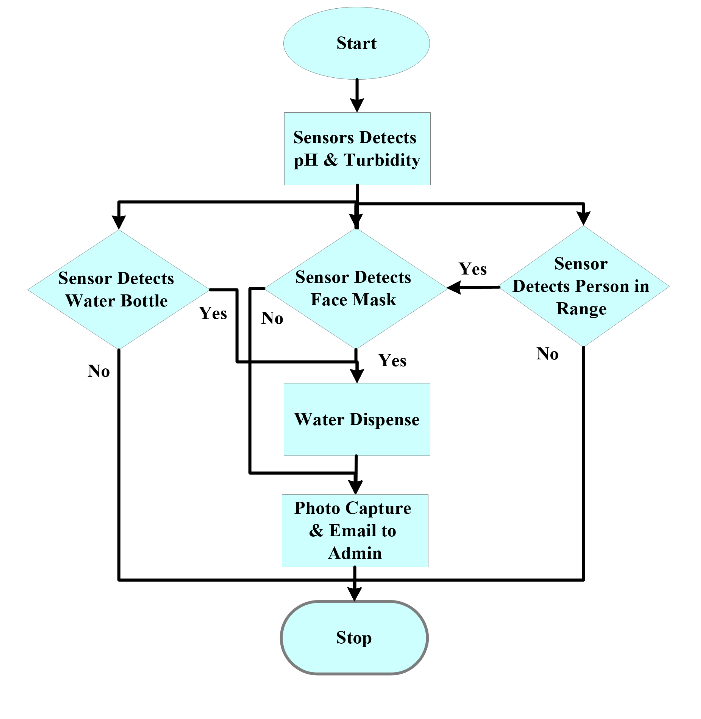
Figure 4: Proposed model.
IV. RESULTS AND DISCUSSIONS
All the Electrical connections of Arduino, Raspberry Pi and sensors modules are done as shown in figure 1. pH sensor and turbidity sensor are connected to the Arduino and controlled with the help of c language. In our project initially displays the pH and turbidity of the water.
It sends an email to the administrator along with the picture of a person who comes in contact with the dispenser to fetch the water. sending of email is done with the help of Node MCU and Blynk app as shown in below figure 5. Blynk is an IoT platform that includes customized mobile apps, a private cloud, a rules engine, and a device management analytics dashboard, all of which are aimed to make Internet of Things applications simple and flexible.
Designing a dashboard for IoT projects on the Blynk App is simple; all you have to do is arrange buttons, sliders, graphs, and alternative widgets on the screen. We may also customize the widgets to meet our needs. There are three stages to programming a Raspberry Pi for Face Mask Detection.
The first part is data collection, the second is Recognizer training, and the third is face mask recognition.in this project we are using various directories are 1. Dataset: This folder contains the with mask and without mask. 2. Imagesgather_images.py: It is a simple python script to collect the image of a face. 3.training.py: It accepts the input dataset and fine-tunes. 4.detect_mask.py: This mask detection python code uses the trainer data to classify each face as with mask or without mask.
Open the openthis mask.py script and run it. You should see your camera view pop-up window within a few seconds. If the mask is identified, a green box with the label ‘Mask Detected' will appear, and if no mask is detected, a red box with the label ‘No Mask Detected' will appear.
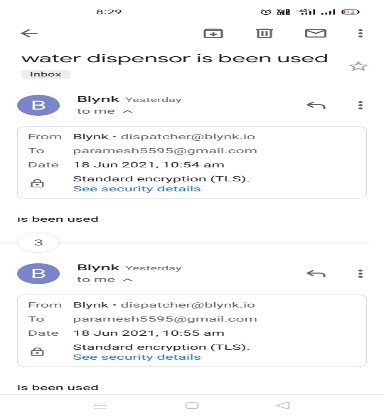
Figure 5: Email alert to admin.
When the person comes in contact with the dispenser, facemask along with the bottle is detected using Raspberry Pi, PIR sensor and IR sensor. The picture of the person is captured using pi camera. Together with this picture of the person with or without facemask is captured when person makes contact with the dispenser along with a warning as shown in figure 6 and figure7. Detection of facemask is programmed using python programming language along with libraries like open source computer vision and machine learning.
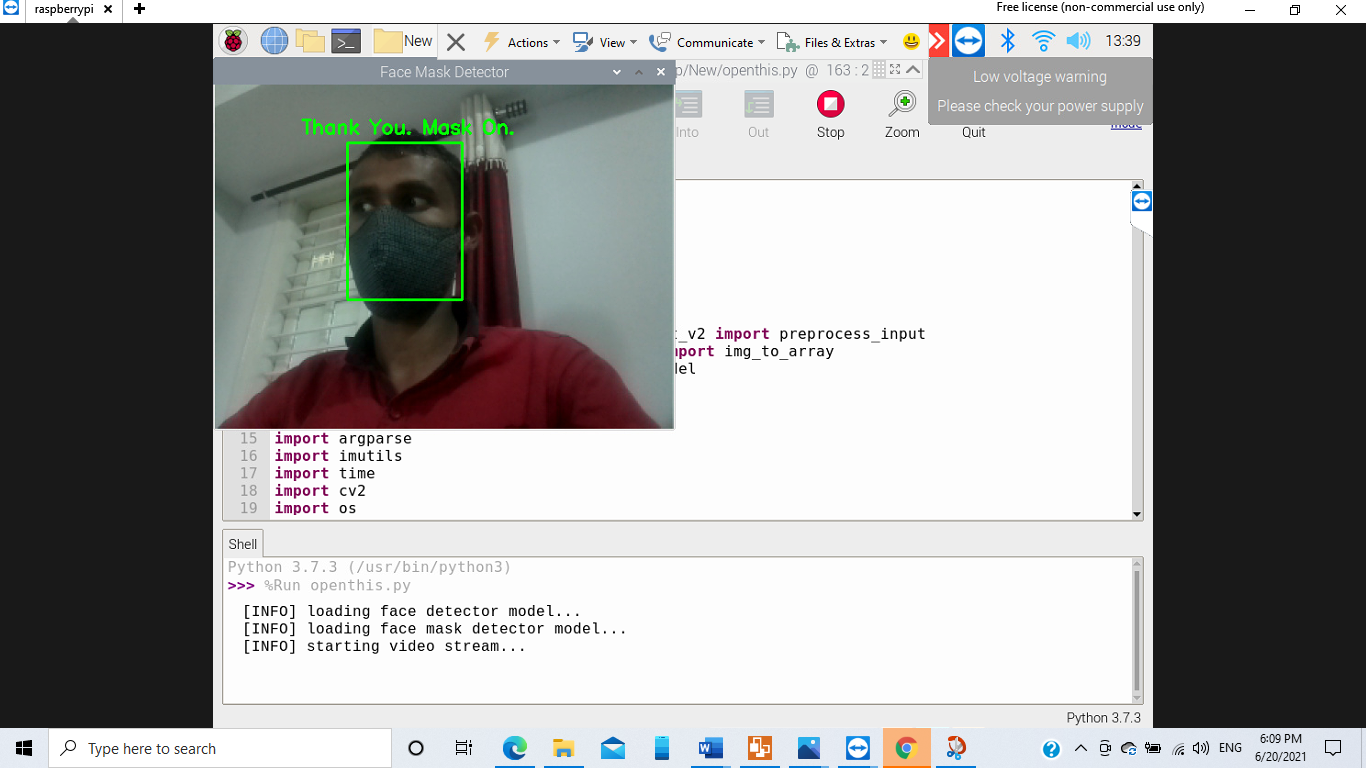
Figure 6: With face mask detection.
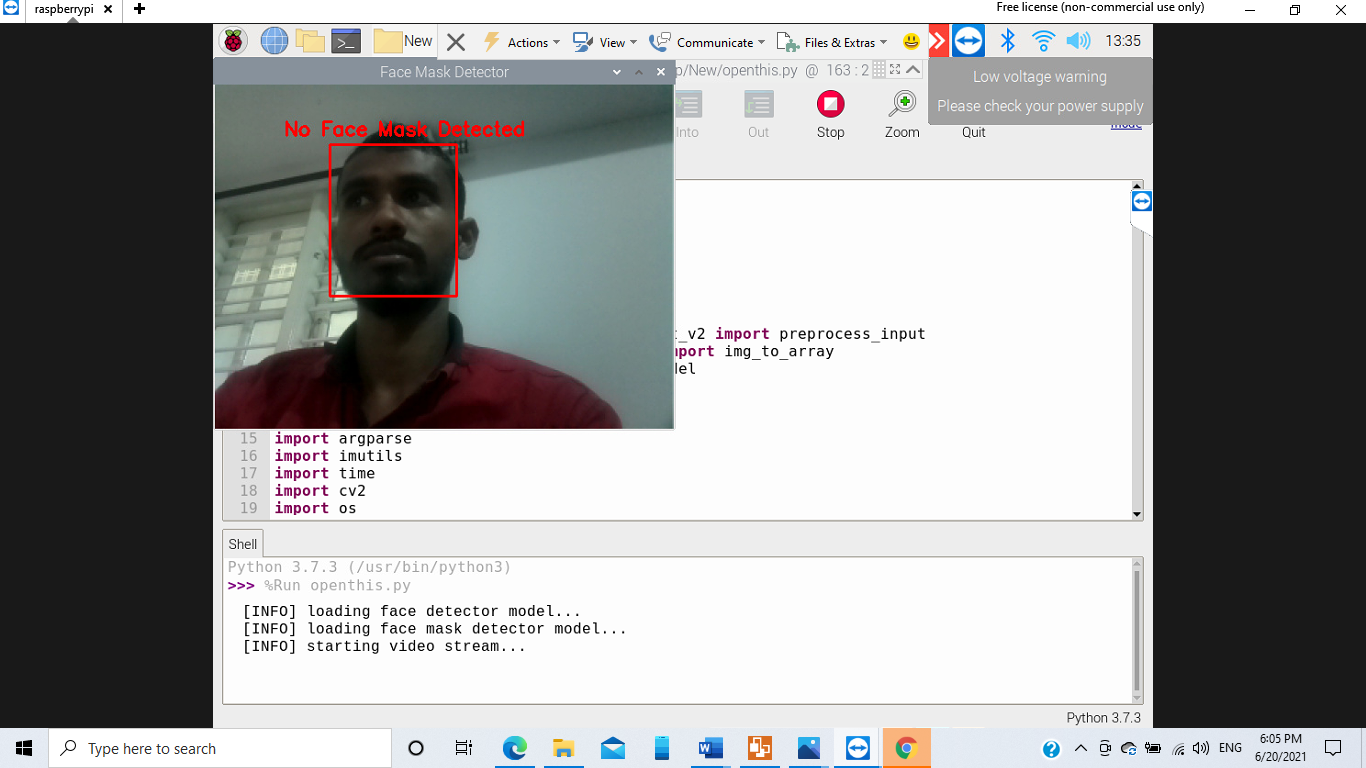 Figure 7: Without face mask detection.
Figure 7: Without face mask detection.
By using Pi camera captured photos of the persons are stored in the admins database as shown in figure 8.

Figure 8: Captured photos in database.
Conclusion
This system is much helpful for the society to get the quality of water and also to prevent the contagious diseases. This automatic dispenser provides hygienic water using many sensors which detects facemask and make certain a person is unaffected by the contagious disease like SARS COV-2. The smart system is implemented with camera to capture the picture and sends an email alert to administrator to monitor the dispenser. This system saves the time and helps in managing the quality of water. In future the proposed system efficiency is increased with highly précised sensors and controllers.
References
[1] Abdul Rauf Memon, Saadia Kulsoom Memon, Abdul Aziz Memon and Tayab Din Memon, “IoT Based Water Quality Monitoring System for Safe Drinking Water in Pakistan, 2020 3rd International Conference on Computing, Mathematics and Engineering Technologies (iCoMET 2020). [2] Jitendra Kumar, Raja Baitha, N. Naveen and V. Sekhar.V. Srimaheswaran5, “Smart Water Monitoring System”, International Journal of Innovative Trends in Engineering (IJITE), issue. 88, vol.64, no.01, (2020), pp.15-19 [3] Anuradha T, Shweta Jadhav and Sridevi Mahamani, “Smart Water Dispenser and Monitoring Water Level in IoT And Android Environment, International Journal of Computer Sciences and Engineering, issue.5, vol.7, (2019), pp.810-814. [4] Karima Chaabna, Sathyanarayanan Doraiswamy, Ravinder Mamtani and Sohaila Cheema “Facemask Use in Community Settings to Prevent Respiratory Infection Transmission: A Rapid Review and Meta-Analysis”, International Journal of Infectious Diseases, vol.104, (2021), pp.198–206. [5] Parul Maurya, Sejal Nayak, Samarth Vijayvargiya and Megha Patidar, “Covid-19 Face Mask Detection”, 2nd International Conference on Advanced Research in Science Engineering and Technology, (2021). [6] Krishna.S, Sarath T.V., M.S Kumaraswamy and Vishnu Nair, “IoT Based Water Parameter Monitoring System”, Proceedings of The Fifth International Conference on Communication and Electronics Systems, (ICCES 2020). [7] Ajith Jerom.B, Manimegalai.R and Ilayaraja. V, “An IoT Based Smart Water Quality Monitoring System Using Cloud”, 2020 International Conference on Emerging Trends in Information Technology and Engineering (IC-ETITE), (2020). [8] Abhishek Srivastava, Shubham Dwivedi, Saurabh Bhardwajn and Mr. Hem Chandra Joshi, “Study of Automatic Water Dispenser”, International Journal on Emerging Technologies, issue.8, vol.1, (2017), pp.88-91. [9] Nenad Perovic and Dorde Kocic, “IoT-Based System For COVID-19 Indoor Safety Monitoring”, IcETRAN, Belgrade, Serbia, (2020). [10] Rizqi Putri, Nourma Budiarti, Anang Tjahjono, Mochamad Hariadi, Mauridhi Hery and Purnomo, “Development of IoT For Automated Water Quality Monitoring System”, Proc. ICOMITEE, Jember, Indonesia, (2019), October 16-17.
Copyright
Copyright © 2024 Paramesh B L, Dr. C Mallikarjuna, Dr. R Suresh, Vinod Kumar M S. This is an open access article distributed under the Creative Commons Attribution License, which permits unrestricted use, distribution, and reproduction in any medium, provided the original work is properly cited.

Download Paper
Paper Id : IJRASET66106
Publish Date : 2024-12-25
ISSN : 2321-9653
Publisher Name : IJRASET
DOI Link : Click Here
 Submit Paper Online
Submit Paper Online

